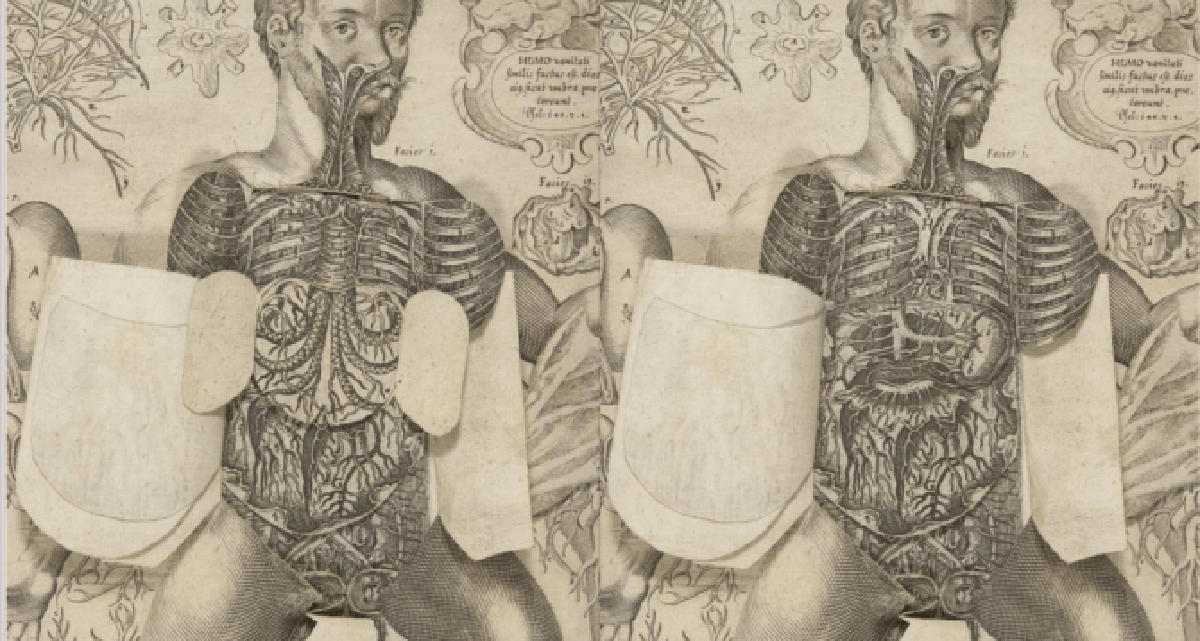A team of Columbia book conservators recently restored and digitized a seventeenth-century anatomical flap book that represents one of the earliest attempts to show the three-dimensionality of the human body on the printed page. The book, a 1661 German translation of Johann Remmelin’s Catoptrum Microcosmicum, originally published in Latin in 1613, uses a series of overlapping paper flaps to illustrate the layered systems of the body — a strategy that medical-textbook publishers have continued to use to the present day, only changing the materials from paper flaps to transparent plastic overlays in the twentieth century.
Acquired by Columbia in the late 1920s from the estate of George S. Huntington (1861–1927), a Columbia physician and professor of anatomy, the book had been in storage for several decades when librarians selected it for restoration last year.
“It’s an important title, both in the history of anatomy and the history of bookmaking,” says Stephen Novak, the head of archives and special collections at the Columbia University Medical Center’s Augustus C. Long Health Sciences Library, which owns some 27,000 rare books.
“It’s very fragile, though, and over the years its condition had deteriorated. Many of its flaps had become so brittle that we didn’t dare let anyone touch them.”
Last summer, conservators at the Columbia University Libraries’ conservation lab painstakingly flattened and mended each of the book’s nearly 120 flaps and rebound the volume. Their colleagues in the libraries’ preservation and digital-conversion division then created an electronic version of the book by photographing its pages in every possible iteration, their individual flaps opened one by one.
“Now everybody can explore it online,” says Novak, “and the original volume is in better shape than ever, preserved so that future generations of researchers can study it.”



